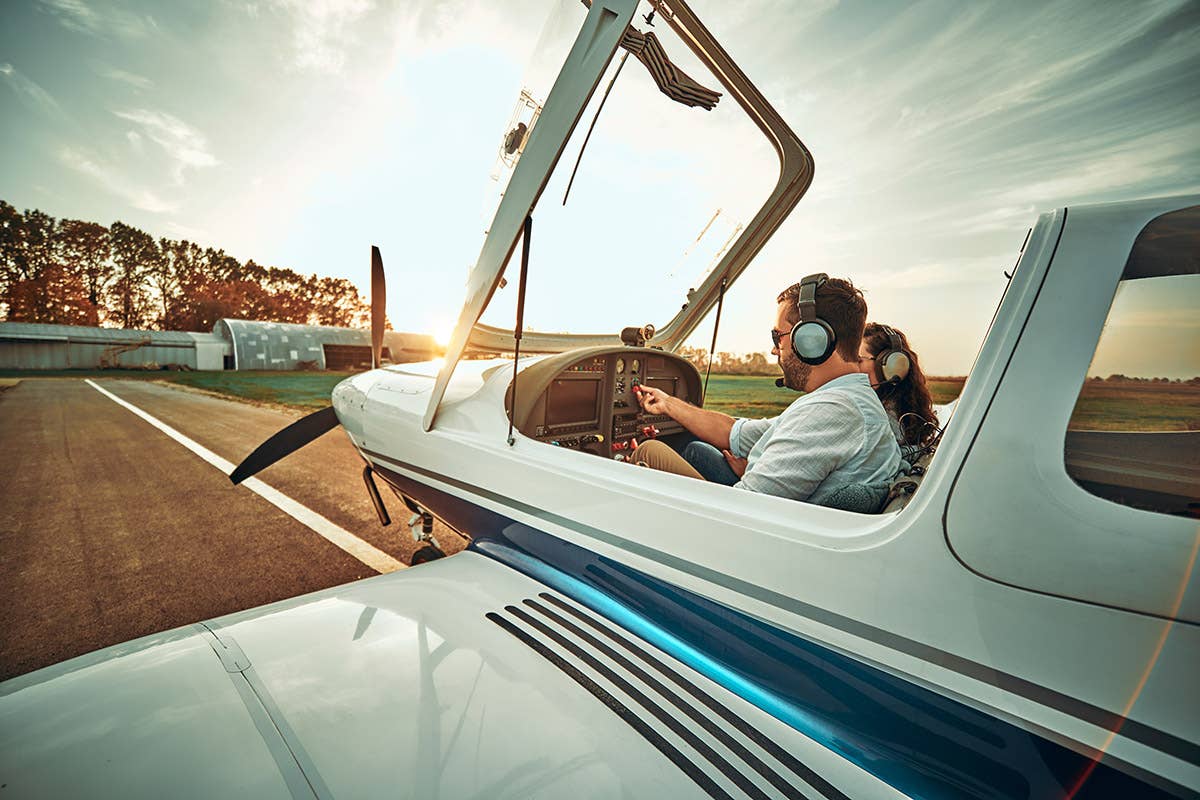NASA, Joby Research Provide Glimpse of Air Taxi Operations at US Airports
A series of simulations focused on potential operations in the Dallas-Fort Worth area, using tools and procedures already available to air traffic controllers.

NASA and Joby recruited air traffic controllers to conduct 360-degree simulations of eVTOL operations around airports. [Courtesy: Joby Aviation]
Recently, hundreds of electric vertical takeoff and landing (eVTOL) air taxis took flight over the Dallas-Fort Worth area. Missed it? That’s because the flights took place virtually at a NASA research hub.
The space agency and eVTOL manufacturer Joby Aviation recently teamed up to recruit active and retired air traffic controllers for a series of simulations, which explored how current ATC tools and procedures could help introduce the first wave of air taxis at U.S. airports. The partners tested how hundreds of eVOL flights per hour would impact operations in complex airspace—and gleaned a few key insights.
“This simulation validates the idea that we can find a way to safely integrate these vehicles into the airspace at scale,” said NASA researcher Ken Freeman.
As the U.S. prepares for eVTOL air taxis to enter service around airports, with the earliest services expected to arrive in 2025, NASA and its industry partners are working with the FAA to demonstrate how existing ATC tools can enable safe integration. The vision is in line with the FAA’s Innovate28 philosophy for early air taxi operations, which calls for the aircraft to use existing regulations and infrastructure.
The series of human-in-the-loop simulations was conducted out of NASA’s FutureFlight Central virtual tower facility, which offers a 360-degree view of a real-time simulation of an airport. NASA and Joby engineers simulated traffic patterns at Dallas Love Field (KDAL) and Dallas-Fort Worth area airports to represent complex, busy airspace.
Using predetermined routes developed by NASA at Dallas-Fort Worth International Airport (KDFW) and Love Field, eVTOL pilots flew in simulated weather conditions, producing mock flight data and airport operational data. ATC also evaluated traffic schedules developed by Joby, based on the company’s expectations for future demand.
During an hour of simulation, controllers tested their ability to integrate up to 120 eVTOL arrivals and departures from KDFW’s central terminal area, alongside existing traffic. They used routes and procedures often seen in busy, low-altitude airspace, including Letters of Agreement and dedicated controller positions. At any given moment in the campaign, up to 45 simulated aircraft were flying in virtual Class B airspace.
“We have now demonstrated in a real-world simulation how air taxi operations can take place in today’s airspace system, alongside active airport traffic, using tools and procedures currently available to air traffic controllers,” said Tom Prevot, air taxi product lead at Joby. “These successful simulations were made possible by years of careful planning and collaboration between two organizations committed to redefining what is possible.”
According to NASA, pilots operated safely and seamlessly across the simulations, even in congested airspace. In addition, representatives from NASA and the National Air Traffic Controllers Association (NACTA) and other stakeholders were invited to observe the tests.
“There is so much momentum across the world for advanced air mobility,” said Savvy Verma, an urban air mobility researcher at NASA’s Ames Research Center in Northern California’s Silicon Valley. “We’ve been talking about integrating these kinds of vehicles into the airspace, but to be able to show it in high-fidelity simulation is very promising.”
Based on NASA’s initial analysis of the simulations, the space agency believes the procedures used could be scaled for operations at other airports nationwide, which would reduce ATC workload. Next year, the agency will publish a full analysis of the results, sharing the data with the FAA, airports, and commercial industry to identify ATC tools and procedures for near-term and future integration.
“Enabling eVTOLs as a taxi service for passengers to and from airports in the future could begin to reduce carbon emissions and greatly improve the commute experience for passengers,” NASA said.
NASA and Joby’s jointly developed simulation campaign follows a multiyear airspace study in which the two partnered to develop five use cases for eVTOL operations around Dallas-Fort Worth. The groups are also exploring potential changes to the national airspace system that would enable air taxi integration at greater scale.
“We’re trying to enable a better quality of life,” said Verma. “Some people are stuck in traffic for hours on the way to the airport. A 12-mile trip can take 45 minutes. Imagine being able to do that same trip in 15 minutes.”
Like this story? We think you'll also like the Future of FLYING newsletter sent every Thursday afternoon. Sign up now.

Subscribe to Our Newsletter
Get the latest FLYING stories delivered directly to your inbox






